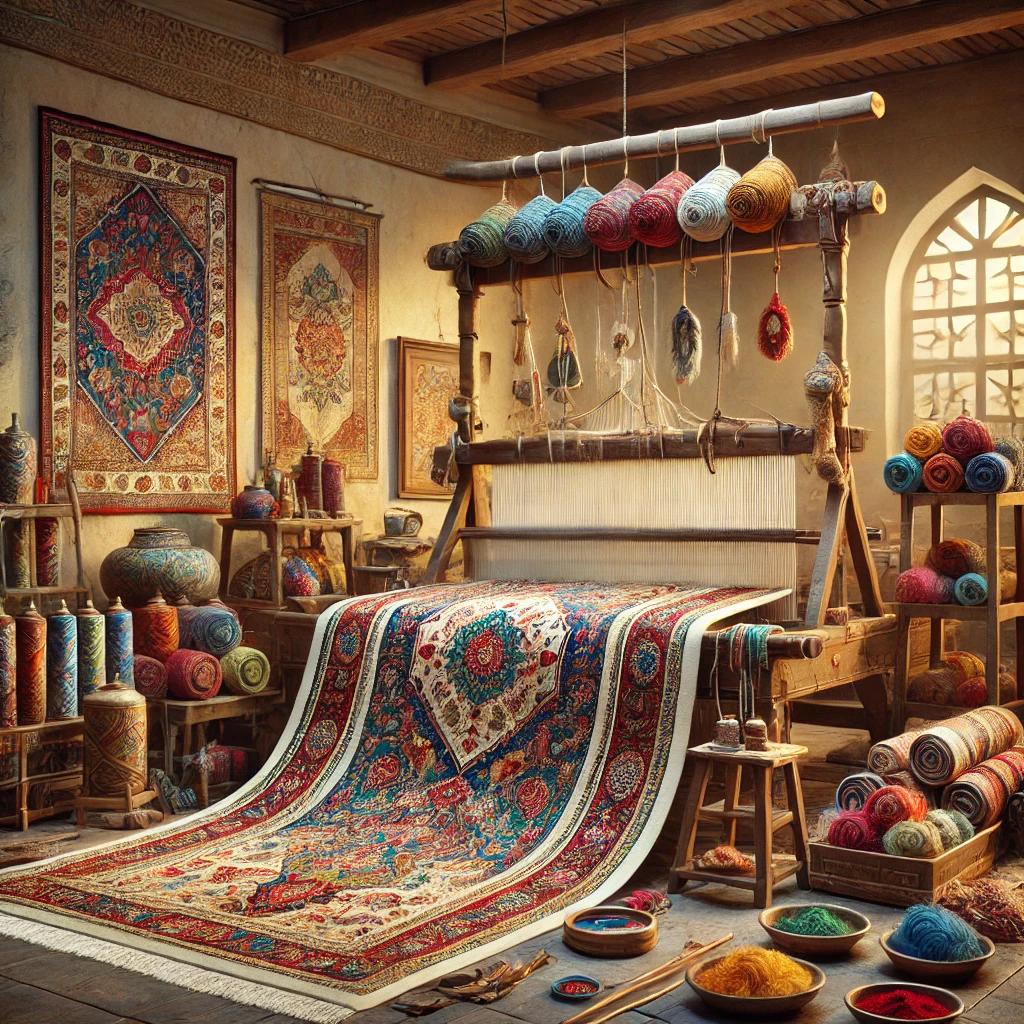
The Ultimate Guide to Rug Appraisal
Estimated reading time: 6 minutes
Key Takeaways
- Understanding different types of rug appraisals is essential for accurate valuation.
- Professional appraisals provide credibility and assurance for insurance and resale.
- The appraisal process can identify key factors that influence a rug’s value.
- Avoid common mistakes during the appraisal process to ensure a fair assessment.
Table of contents
Rug appraisal is the professional evaluation of a rug’s value, taking into account various factors such as material, craftsmanship, age, and provenance. This process is critical for anyone who wants to insurance or resale their rugs, ensuring that their investment is protected and valued accurately. Whether you’re looking to insure a cherished family heirloom or sell a vintage piece in the market, understanding rug appraisal is essential.
In this comprehensive guide, we will explore the different types of rug appraisals, the appraisal process, why professional appraisals are necessary, and much more. By the end of this post, you will have a clearer understanding of how to navigate the world of rug valuation.
Understanding Different Types of Rug Appraisals
Overview of Rug Appraisal Types
Rugs come in various styles, designs, and types, each requiring special attention during the appraisal process. The type of rug influences the criteria for valuation, so knowing what you have is key.
Carpet Appraisal
Carpet appraisal is a process that provides a general overview of a carpet’s value. It involves assessing materials, workmanship, and overall condition, which are crucial factors for insurance and resale. A reliable carpet appraisal will ensure you understand the true value of your carpet, allowing you to make informed decisions regarding its future.
- Key Factors: Material quality, craftsmanship, overall condition.
- Importance: Essential for insurance coverage and effective resale.
For more details, click here. Source 2
Area Rug Appraisal
Area rug appraisal focuses specifically on rugs designed for particular spaces. Factors like dimensions, placement, and usage patterns are critical in determining the rug’s value.
- Considerations: Size, purpose of the rug, interior design compatibility.
For expanded information on area rug appraisal, click here.
Antique Rug Appraisal
Antique rug appraisal is particularly essential for vintage and historical pieces. This type of appraisal gives more weight to age, rarity, condition, and provenance, making it necessary to understand a rug’s unique history.
- Importance: Antiques can appreciate significantly due to their uniqueness and historical value.
To delve deeper into antique rug appraisal, visit this link. Source 2
Persian Rug Appraisal
When appraising Persian rugs, several characteristics need special consideration. These include knot density, design complexity, and traditional dyes, which contribute largely to their value.
- Unique Aspects: Persian artistry and specific regional motifs greatly influence valuation.
For more detail on Persian rug valuations, check out this article. Source 1, Source 2
Persian Carpet Appraisal
A distinction must be made between Persian rugs and carpets. This appraisal focuses on larger Persian pieces, considering factors like size and intended use.
- Differences: Persian rugs are usually smaller and movable, while carpets are larger and integral to a room’s décor.
To learn more about Persian carpet appraisal, click here.
Oriental Rug Appraisal
Oriental rug appraisals involve assessing rugs that originate from the broader Oriental region. Valuation considers elements such as cultural symbolism, weaving techniques, condition, and the origin of the rug.
- Valuation Factors: Cultural context, craftsmanship styles.
For an in-depth discussion, visit this link. Source 2
Oriental Carpet Appraisal
In Oriental carpet appraisals, large, often ceremonial or historically significant carpets are scrutinized. Appraisers look at historical significance, scale, and rarity to determine value.
- Focus: Impressive historical and provenance documentation.
For further insights, check this source. Source 2
Turkish Rug Appraisal
Turkish rug appraisal involves unique aspects affecting valuation, including distinct weaving techniques, patterns, and color palettes. These characteristics contribute significantly to their overall worth.
- Valuation Influences: Weaving method and regional designs play a crucial role.
To explore Turkish rug appraisal further, click here.
The Rug Appraisal Process
Step-by-Step Guide
The rug appraisal process can be broken down into key steps for clarity:
- Identification: Identify the rug’s origin, age, design, and material. Determine whether it’s handmade or machine-made.
- Evaluation: Assess the rug’s condition, including any repairs or wear, and evaluate craftsmanship and knot density.
- Market Analysis: Review sales, auction records, and current demand for similar rugs to gauge market trends.
- Value Determination: Based on the previous steps, establish a value for insurance or resale purposes.
- Documentation: Compile formal appraisal reports, including photographs and essential details for authentication and insurance.
For a deeper understanding of the appraisal process, read more here. Source 2
Factors Considered in Appraisal
Key aspects influencing rug valuation include:
- Material (e.g., wool, silk, or cotton)
- Craftsmanship and knot density
- Age and historical context
- Provenance detailing ownership history
- Condition and prior restorations
For a more comprehensive breakdown, visit this source. Source 2
Documentation & Authentication
A thorough appraisal typically results in detailed documentation. This paperwork provides evidence of value through photographs and certification, essential for insurance claims or resale purposes.
For more about documentation, click here. Source 2
Why Professional Appraisal is Essential
A professional appraisal is crucial for several reasons:
- Accurate Valuation: A qualified appraisal provides assurance for insurance coverage, protecting against loss or damage.
- Investment Protection: Having formal documentation enhances the rug’s credibility and resale value by certifying its authenticity and characteristics.
To understand the importance even further, check out this guide. Source 2
Choosing the Right Appraiser
Selecting the right appraiser is essential for a reliable evaluation. Here are some guidelines to follow:
- Accredited Qualifications: Look for appraisers with appropriate certifications and recognized experience in specific rug types (such as Persian, Oriental, and Turkish rugs).
- Experience and References: Ask about the appraiser’s experience with rugs similar to yours and request references or samples of previous work.
- Purpose Clarity: Clarify the appraiser’s approach to different purposes, whether for insurance, estate, or auction.
For more tips on selecting an appraiser, click here. Source 2
Costs Involved in Rug Appraisal
Costs for rug appraisals can vary based on several factors:
- Factors Affecting Cost: Rug type, size, complexity, and the appraiser’s reputation influence total fees.
- Typical Rates: Appraisal fees can range from a flat fee per rug to hourly billing rates—often higher for antique or large pieces.
To navigate the costs associated with rug appraisal, read more here. Source 2
Benefits of a Detailed Rug Appraisal
Having a detailed rug appraisal offers many advantages, including:
- Smooth Insurance Claims: Concrete evidence of value can facilitate quick claims if necessary.
- Peace of Mind: Professional documentation brings assurance about the condition and value of your rug.
- Assistance in Estate Planning: Establishing fair market value helps in determining inheritance distribution more effectively.
For further information on the benefits of detailed appraisals, check this out. Source 2
Common Mistakes to Avoid During Rug Appraisal
Avoid these common pitfalls that can undermine the appraisal process:
- Neglecting Professional Appraisal: Relying on informal evaluations can lead to significant undervaluation or lack of insurance coverage.
- Poor Rug Care: Failing to care for the rug prior to appraisal may impair condition assessments.
- Choosing Unqualified Appraisers: Selecting unaccredited appraisers can result in inaccurate or unrecognized evaluations.
For more ways to avoid these mistakes, check this link. Source 2
Conclusion
A rug appraisal is key for anyone seeking to properly value their rugs for insurance, resale, or estate planning purposes. Engaging a professional appraiser ensures that your investment is secured and accurately documented. Take the necessary steps to protect the value of your cherished rugs by seeking certified appraisers and keeping your appraisals updated.
For more detailed information about rug appraisals, visit the original articles from Ala Sahara Rugs, Nazmiyal Antique Rugs, and Ren Collection.
Your rugs hold stories and value; do not leave their worth unappraised.
FAQ
What is a rug appraisal?
A rug appraisal is a professional evaluation of a rug’s condition, quality, and market value based on various elements such as age, material, and craftsmanship.
How often should I get my rug appraised?
It’s advisable to get your rug appraised every few years or after significant changes in the market to ensure that insurance coverage accurately reflects its current value.
Can I appraise my own rug?
While you can make an informal assessment, it is highly recommended to seek a professional appraiser to ensure an accurate and credible evaluation, especially for insurance purposes.
What factors influence a rug’s value?
Factors include material quality, craftsmanship, age, provenance, condition, and market demand, all of which contribute to its overall valuation.


